Background:
This post addresses the comparison of an aftermarket catted downpipe with an aftermarket catless downpipe looking at estimated wheel horsepower and wheel torque.
Previously a comparison was made using a flow test. Another comparison was of boost onset data.
A Trackslag catted downpipe is being compared with an ARM Motorsport catless downpipe.

Test Procedure:
Wheel horsepower will be estimated using the Virtual Dyno software program. The software uses the vehicle acceleration data, in this case, recorded using a Cobb Accessport, along with information about the Mk7 GTI, to calculate the wheel horsepower.
The GTI is placed in third gear and accelerated at full throttle from approximately 2000 RPM until approximately 6300 RPM. This full-throttle acceleration is repeated several times for both configurations to collect data for statistical comparison.
Test Results:
During the acceleration runs a wheel slip was observed to occur a few times. This is shown by a momentary jump in the engine RPM.
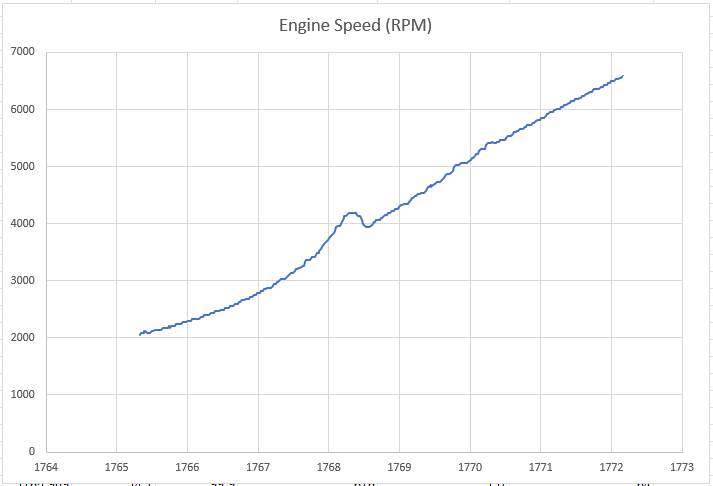
This can create a problem where the Virtual Dyno software interprets the wheel slip as a sudden burst of acceleration of the vehicle, incorrectly leading to an estimation of more power than is possible. Shown by the Red Line in the chart below.
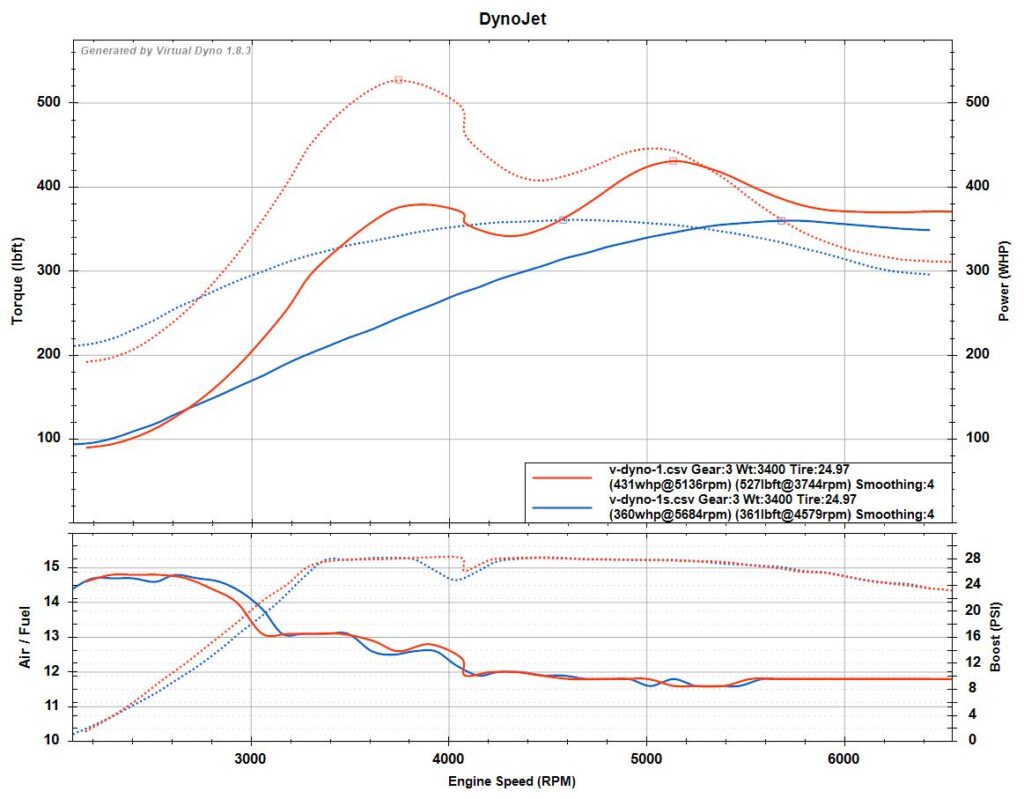
To address this situation all of the raw data is processed by fitting a third-order polynomial curve to the raw data.

The acceleration time component is input into the equation for the RPM curve and the resulting smoothed engine RPM data is used with the Virtual Dyno program. The result is a more realistic power curve.
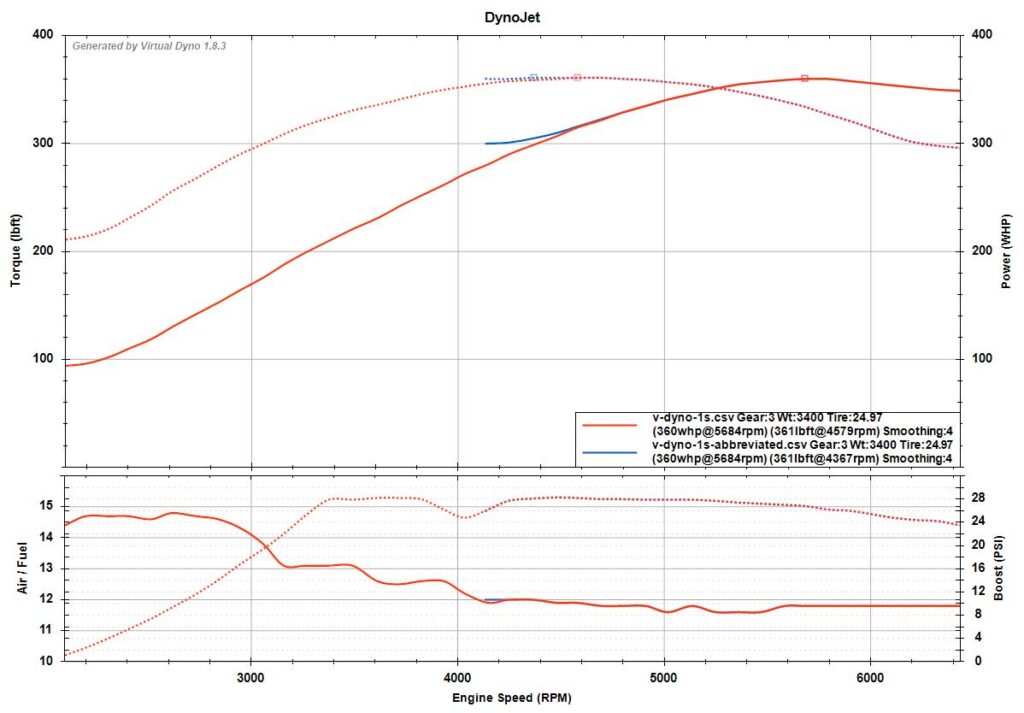
Note: It was considered that smoothing the data at the wheel slip time might influence the maximum reported horsepower. To investigate this possibility the data file was shorted to only include data after the wheel slip occurs. The estimated maximum wheel horsepower is unchanged, shown by the Blue Line in the above chart.
Estimates for the wheel horsepower using each of the downpipes is shown on the boxplot:

The boxplots indicate the data is similar. A t-Test is then performed using the samples:

The hypothesis is that there is no significant difference between the wheel horsepower values for these two downpipes.
The results of the t-Test support the hypothesis that the WHP differences are not statistically significant.
Anecdotally the occurrences of wheel slip seemed to occur more often with the catless downpipe. Partial sampling the data confirmed that wheel slip was occurring more often with the catless downpipe.

The wheel slip occurs at an engine speed that is not far after boost pressure peaks leading to a hypothesis that the catless downpipe might have a greater effect on wheel torque than horsepower.
Comparing the estimates for wheel torque using a box plot.
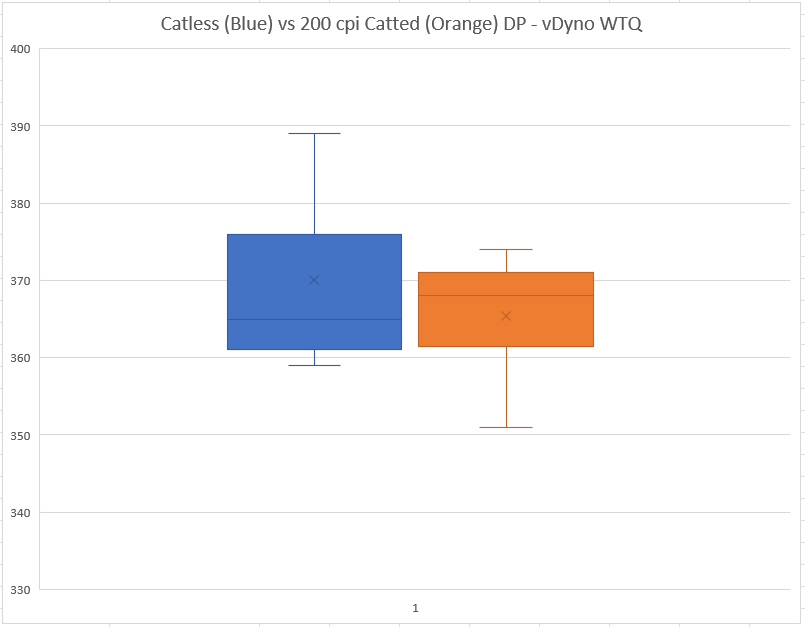
Some of the catless downpipe wheel torque values are greater than the catted downpipe, agreeing with the wheel slip comparison.
Again performing a t-Test with the sample estimates:
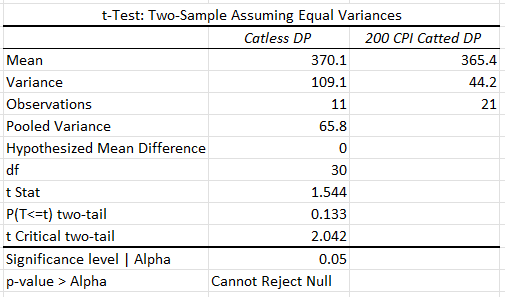
As with the wheel horsepower estimates the differences in maximum wheel torque are not statistically significant.
Note: The Alpha of 0.05 means there is a 5% risk of concluding the unknown population means are different when they are not. If the risk of making an incorrect conclusion is increased to 15%, Alpha of 0.15, the means are significantly different. In other words, the average TQ value with the catless downpipe appears to be slightly greater, but there is a 15% chance this conclusion is wrong.
Conclusions:
Data were recorded during full-throttle pulls on the street using a catless downpipe and catted downpipe. Eleven (11) samples were recorded using the catless downpipe and twenty-one (21) samples were recorded using the catted downpipe.
Estimates of maximum wheel horsepower were calculated using Virtual Dyno. The mean WHP values for each downpipe were not statistically different using a 5% risk (alpha) level. The catless downpipe does not show any performance benefit over the catted downpipe used for this comparison.
Note: Raising the risk level (Alpha) to 15% does not change the outcome.
Wheel slip observations suggest that the catless downpipe allows the engine to produce slightly more peak torque near the initial boost onset. Estimates of the wheel torque using Virtual Dyno did not show a statistical difference between the mean values using a 5% risk of making an incorrect conclusion. Using a 15% risk of an incorrect conclusion led to a statistically significant difference between the mean values.
Maximum wheel torque is likely on average slightly greater for the catless downpipe, but the difference is small enough that this hypothesis is rejected at a 5% risk level.
The performance benefits of the tested catless downpipe are negligible, if they exist at all, versus the catted downpipe used for this comparison following the procedures described above, under the conditions at the time this data was recorded.
References:
Addendum:
Some people contacted me asking if I was saying as part of this post’s conclusions that there is no benefit from a catless downpipe.
That is not correct. Previously I have flow tested the Trackslag catted vs ARM catless downpipes and airflow increased by ~20% with the catless downpipe. There is a potential for performance gains from a catless downpipe.
Whether it was the hardware or method or recording data, in this scenario above there wasn’t a significant difference in performance, not none at all.
Looking at the turbocharger wastegate duty cycle for each of these products, the catless downpipe is correlated with a more efficient turbocharger operation.
A revision to the ECU tune may take advantage of this improved efficiency and produce more power.

